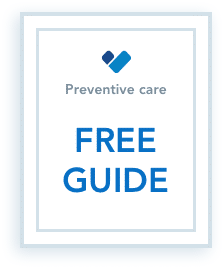Who can enroll in health coverage after January 15th
At HealthSherpa, it’s our mission to help every American feel the comfort and security of having health coverage.
As you probably know the Open Enrollment Period—the period when you can buy or change your Marketplace health insurance plan—has passed in most states but there are still a few ways to get health insurance after January 15th if you qualify.
Some states have extended Open Enrollment Periods. Search your state to see if it extends past January 15th.
What if I miss my state’s Open Enrollment Period?
If you miss the deadline in your state, there are a few other ways to get health insurance. You may still be able to enroll in a plan after the deadline if you have a qualifying life event (QLE). If you experience a major life event like losing your health insurance, getting married, having or adopting a child, it makes you eligible for a Special Enrollment Period (SEP). Qualifying life events fall under the following six main categories:
- Loss of qualifying health coverage
- Change in primary residence
- Change in household size
- Enrollment or plan error
- Change in eligibility for Marketplace coverage or for help paying for coverage
- Other situations or exceptional circumstances
In most cases, an SEP will last 60 days after you become eligible. If you’ve experienced any of the above events, and think you may have a qualifying life event, give our team a call at (872) 228-2549 and one of Consumer Advocates can answer any questions and help you get enrolled.
What if I still need healthcare?
If your state hasn’t extended the deadline to enroll and you don’t have a qualifying life event, there are a few other ways you can possibly get help.
In the US, one of the biggest programs for healthcare is Medicaid. Medicaid is the government-funded health insurance program that provides free or low-cost health coverage for eligible low-income adults, children, pregnant women, seniors, and people with disabilities. To find out if you qualify for this program, you’ll need to fill out an application. If you qualify for Medicaid, you can enroll anytime throughout the year.
For those families whose incomes are too high to qualify for Medicaid, the Children’s Health Insurance Program (CHIP) works closely with Medicaid. It provides low-cost health insurance for children. Like Medicaid, the program differs per state, and in some states, CHIP also provides coverage for pregnant women.
For individuals 65 and older, Medicare is available. It is also available to younger individuals with specific disabilities such as Lou Gehrig’s disease (Amyotrophic Lateral Sclerosis, or ALS). Learn more about Medicare eligibility and costs here.
We understand that health coverage could be expensive, so if you are still in need of quality care and you don’t qualify for a government program, we put together this helpful resource for some additional affordable healthcare options.














Leave a Comment